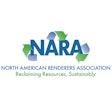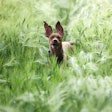
On February 28, the United States Food and Drug Administration (FDA) issued a warning letter to Pet Center, Inc. after a follow-up inspection of a California dog chew facility that uncovered various violations of FDA’s Current Good Manufacturing Practice, Hazard Analysis and Risk-Based Preventive Controls requirements for animal food. Some of the observations involved apparently rusty meat hooks, pest feces on bags of finished dog chews, or blood and raw flesh splashed onto finished dog chews. FDA gave the company 15 days to respond about what specific steps the facility staff would take.
Excerpts from the letter:
The U. S. Food and Drug Administration (FDA) inspected your pet treat manufacturing facility, located at 221 Hindry Ave., Inglewood, CA, between September 21, 2021 and October 8, 2021. Your facility manufactures dog treats, including Bully Sticks (bull pizzles), Chicken Breast Tenders, and various flavors of SuperChews. This inspection was conducted as a follow up to a previous inspection we conducted between June 21, 2021 and July 13, 2021.
Our recent inspection revealed violations of FDA’s Current Good Manufacturing Practice, Hazard Analysis, and Risk-Based Preventive Controls requirements for animal food, Title 21, Code of Federal Regulations, Part 507 (21 CFR Part 507) which cause your products to be adulterated…
Your pet food facility is subject to the hazard analysis and risk-based preventive controls requirements found in 21 CFR Part 507, subparts A, C, D, E, and F. During the inspection of your facility, FDA Investigators noted evidence of significant violations of these requirements, which included but were not limited to the following:
1. You did not prepare, or have prepared, and implement a written food safety plan, as required by 21 CFR 507.31(a)…
2. You did not ensure that adequate precautions are taken so that plant operations do not contribute to contamination of animal food, animal food-contact surfaces, and animal-food packaging materials, as required by 21 CFR 507.25(a)(5).
Specifically, on September 21, 2021, during the production of your bacon flavored SuperChews, our investigator observed the following:
A. An employee wearing rubber boots—which were worn while walking on the processing room floor soiled with blood and raw animal tissue—stepped into the cooker, onto the food contact surface, and in direct contact with in-process cooked beef backstrap, a SuperChews ingredient.
B. During sanitation, an employee used a high-pressure hose in a manner that caused blood and raw animal tissue present on the processing floor to splash onto cooked, work-in-process SuperChews that had been removed from the ovens to cool. We acknowledge that during the inspection on October 8, 2021, you voluntarily denatured and disposed of the SuperChews contaminated by spray from employees cleaning the soiled floor.
3. You did not clean and maintain animal food-contact and non-contact surfaces of utensils and equipment and store utensils and equipment as necessary to protect against the contamination of animal food, animal food-contact surfaces, or animal food-packaging materials, as required by 21 CFR 507.19(b)…
Specifically, on September 21, 2021, during the production of your bacon-flavored SuperChews, our investigator observed that an employee used a shovel to scoop in-process cooked beef backstrap into a rolling metal cart. The shovel was stored with its food-contact surface in direct contact with the processing room’s floor and the employee did not clean and sanitize the shovel before use…
4. You did not take effective measures to exclude pests from the manufacturing, processing, packing, and holding areas and to protect against contamination of animal food by pests, as required by 21 CFR 507.19(e).
Specifically, on September 21, 2021, our investigator observed the following inside your facility, in the animal food processing areas, and in an exterior holding area:
A. Animal feces in the meat washing room, approximately five feet from an open screen door.
B. Animal feces in the northeast corner of the receiving area, approximately eight feet from an open forklift loading dock screen door.
C. Your laundry area door is constructed of expanded metal mesh grated panel which allows for pest entry. In addition, the bottom corner of the door has a gap of approximately ½ inch in diameter, which can act as an entry point for pests. Furthermore, a gnawed rodenticide pellet was present along a wall in the laundry room approximately three feet from the door.
D. Flies were present throughout the facility and were landing on raw, in-process bull pizzles and chicken.
E. Woven mesh bags of bull pizzles were stacked against an exterior wall of your plant. Animal feces were present atop one such bag. The woven mesh bags containing the bull pizzles were torn open, with finished product exposed to the outside environment…
5. You did not keep the grounds around your animal food plant in a condition that will protect against the contamination of animal food, as required by 21 CFR 507.17(a).
Specifically, on September 21, 2021, our investigator observed the following outside your facility, in the grounds around your plant:
A. Animal feces were present in at least three distinct locations approximately three feet from the open screen door to the meat washing room.
B. Animal feces were present in two distinct locations within the HVAC unit of the ingredient storage freezer.
C. Apparent rodent nesting material and at least 100 apparent rodent excreta pellets in an air condenser housing approximately three feet from the aforementioned expanded metal mesh grated panel door leading into your laundry area. The desiccated remains of what appeared to be a rodent were present approximately ten feet from the air condenser housing.
6. You did not maintain the animal food contact surfaces of your plant equipment and utensils used in manufacturing, processing, packing, and holding animal food to protect animal food from becoming contaminated, as required by 21 CFR 507.22(a)(4)(iii).
Specifically, on September 21, 2021, our investigator observed the following in your production area:
A. Hook racks used to hang bull pizzles for dehydrating were covered in a rust-like material on the food-contact surface on a majority of the hooks.
B. Plastic clamps used to clamp bull pizzles to dry them into a curled shape were covered in dark brown to green filth material. Additionally, nearly all exposed metal components of the clamps were orange and covered in a rust-like dust.
C. Metal clamps affixed with lead fishing weights used to dry bull pizzles in a straight fashion were covered with residue, rust-colored spots, and flaking metal.















